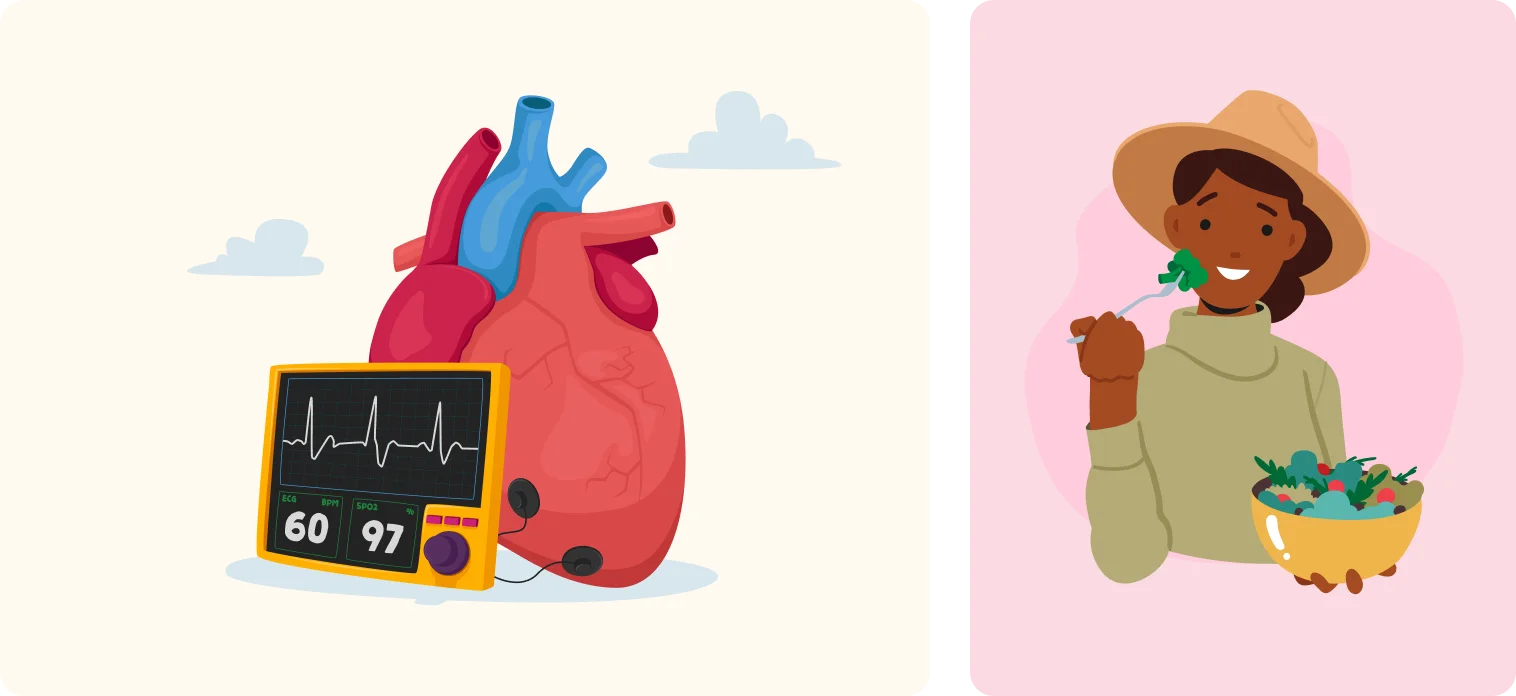Overview
What is high cholesterol?
High cholesterol, also known as hypercholesterolemia, is when you have too much cholesterol in your blood. Cholesterol is a waxy, fat-like substance (also called a lipid) obtained by some foods, that your body needs to work properly—such as for hormone production and membrane formation. Cholesterol travels through your body on proteins called lipoproteins.
Types of lipoproteins
- LDL (low-density lipoprotein) makes up most of your body’s cholesterol. It is also known as “bad” cholesterol because it can accumulate in the arterial walls, forming plaque deposits and contributing to atherosclerosis (hardening of the arteries), increasing your chance of getting heart disease, stroke, and other problems.
- HDL (high-density lipoprotein) absorbs cholesterol in the blood and carries it back to the liver. It is also known as “good” cholesterol because helps remove excess cholesterol from the bloodstream and arterial walls.

Causes
Several factors can contribute to high cholesterol levels in the body:
- Eating a diet high in fat
- Lack of exercise
- Being overweight or obese
- Having a genetic predisposition to high cholesterol levels (familial hypercholesterolemia), heart disease or other risk factors, such as diabetes or high blood pressure
- Increased age—with age your liver becomes less able to remove LDL cholesterol. People over 65 should receive cholesterol tests annually.
- Certain medical conditions such as diabetes, hypothyroidism, kidney disease, and liver disease
- Smoking
- Drinking alcohol
Symptoms
High cholesterol is often referred to as a “silent” condition because it usually does not produce noticeable symptoms on its own in early stages. The only way to diagnose high cholesterol is to take a blood test to measure total cholesterol (all the cholesterol combined), LDL cholesterol and HDL cholesterol.
In advanced stages, high cholesterol can lead more noticeable symptoms related to cardiovascular diseases such as:
- Atherosclerosis is the formation of plaque deposits on the inner walls of arteries, narrowing the arteries and reduce the blood flow to vital organs. Symptoms for atherosclerosis are chest pain or angina, leg pain, stroke, and heart attack.
- Xanthomas are raised, waxy deposits of cholesterol that can appear as yellowish, firm nodules on the skin, particularly around the eyelids or tendons.
- Arcus senilis is a white or greyish ring made up of lipid deposits around the outer edges of the cornea (the transparent front part of the eye that covers the iris and pupil).



















